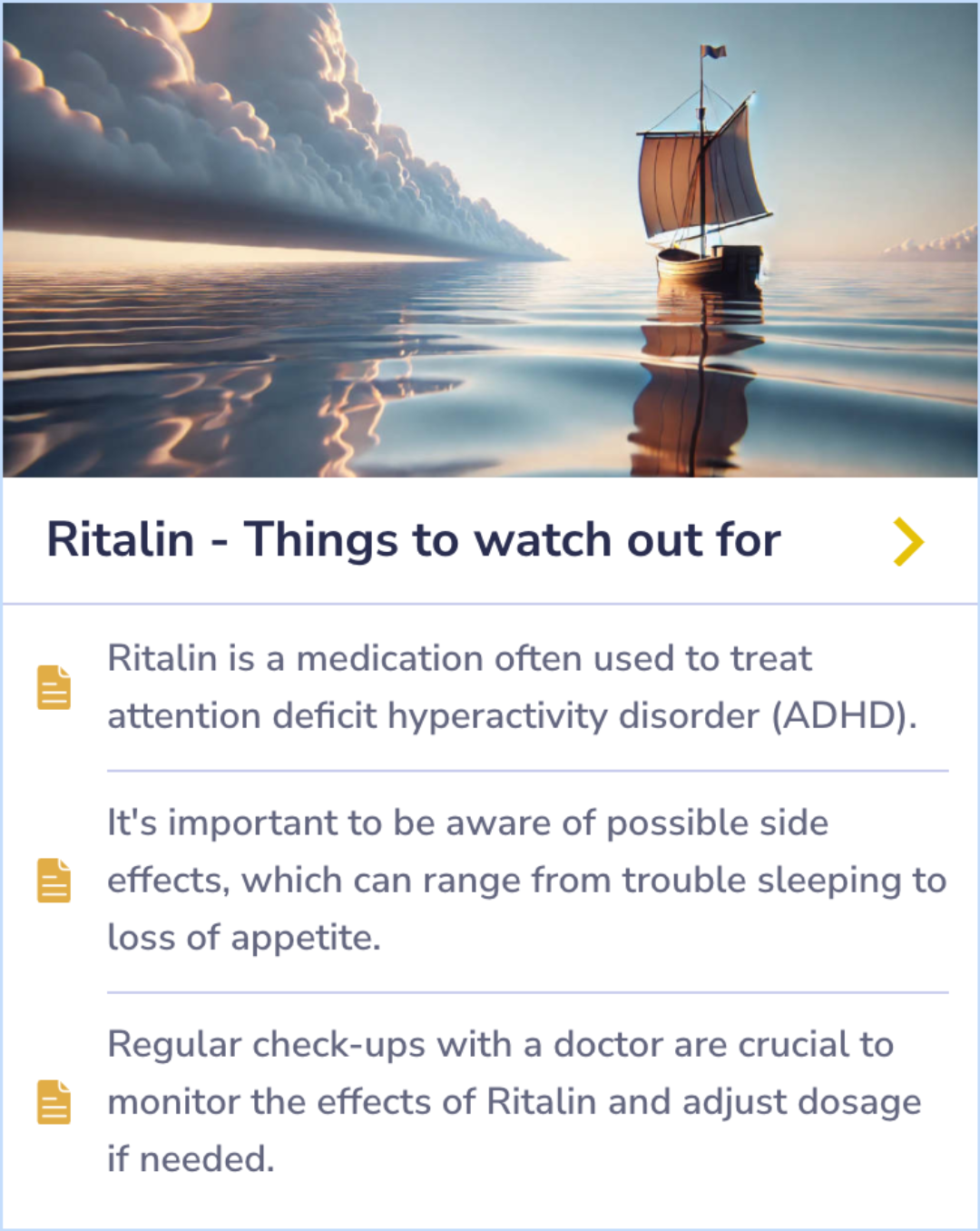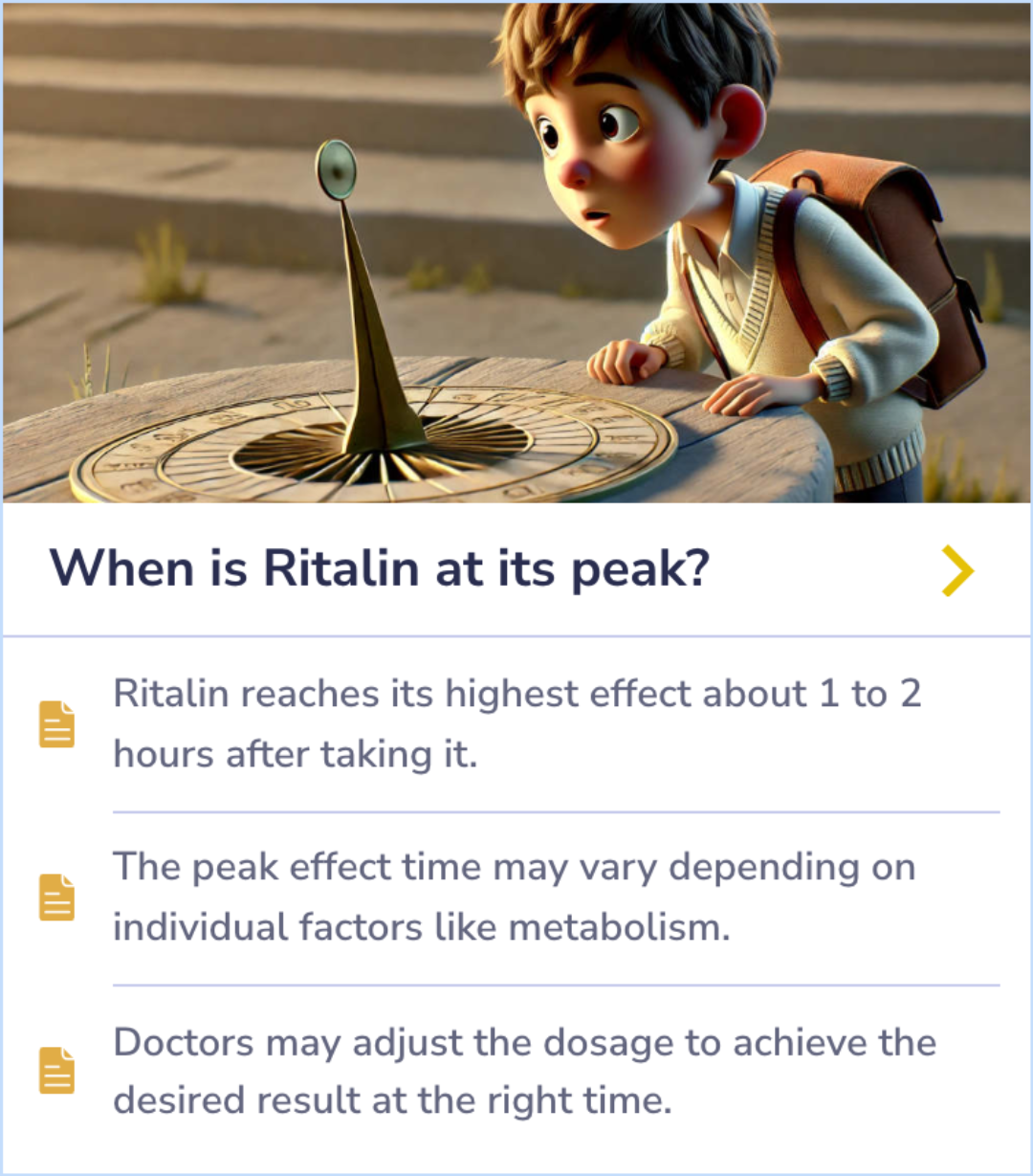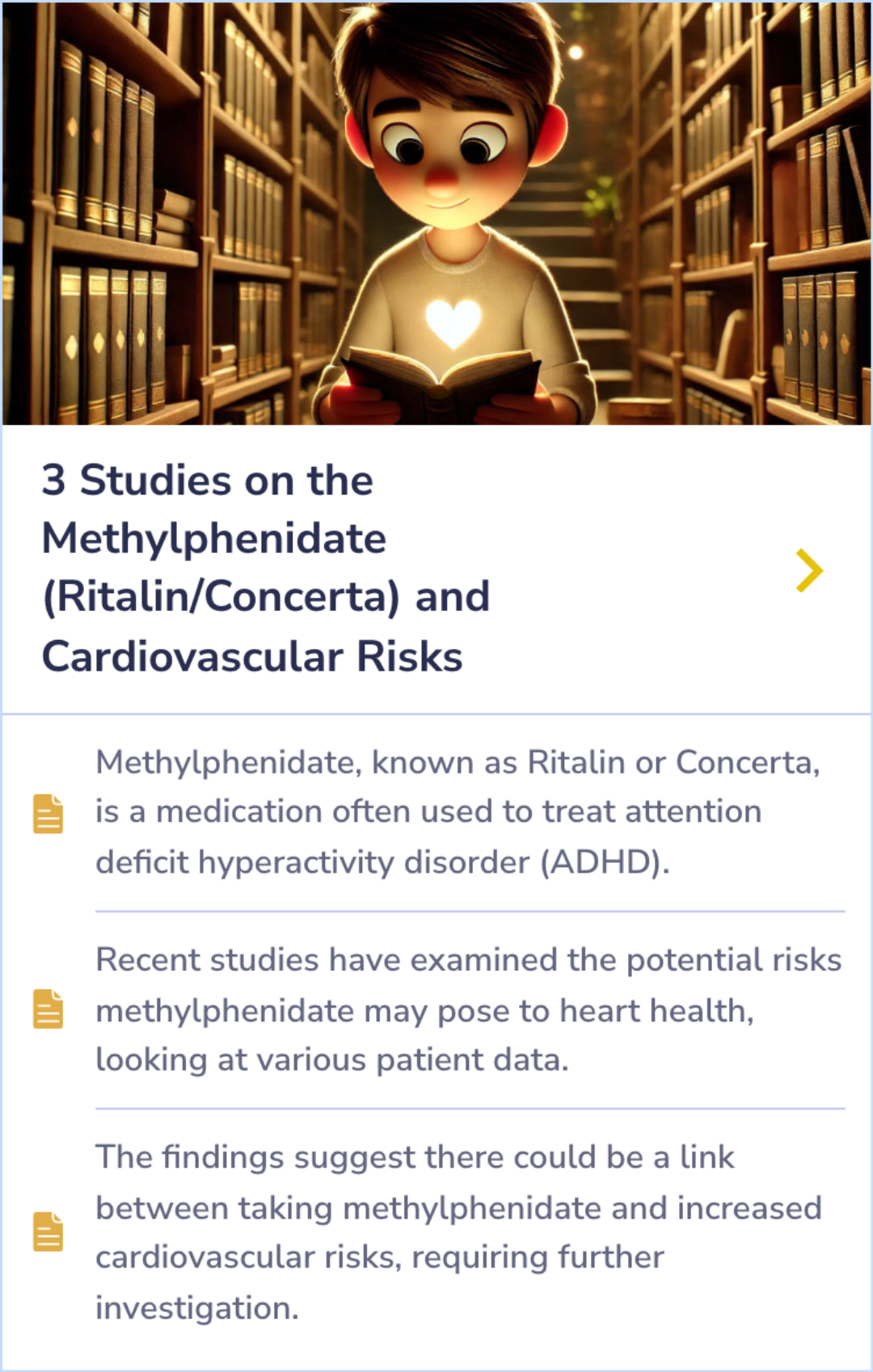Ritalin
Evidence Based Answers
Ritalin Dosage
Ritalin is available in various forms like immediate and extended-release, affecting dosage frequency. Dosing typically starts low and is adjusted based on patient response. Timing of doses is important for absorption and minimizing side effects.
Published: November 9, 2024
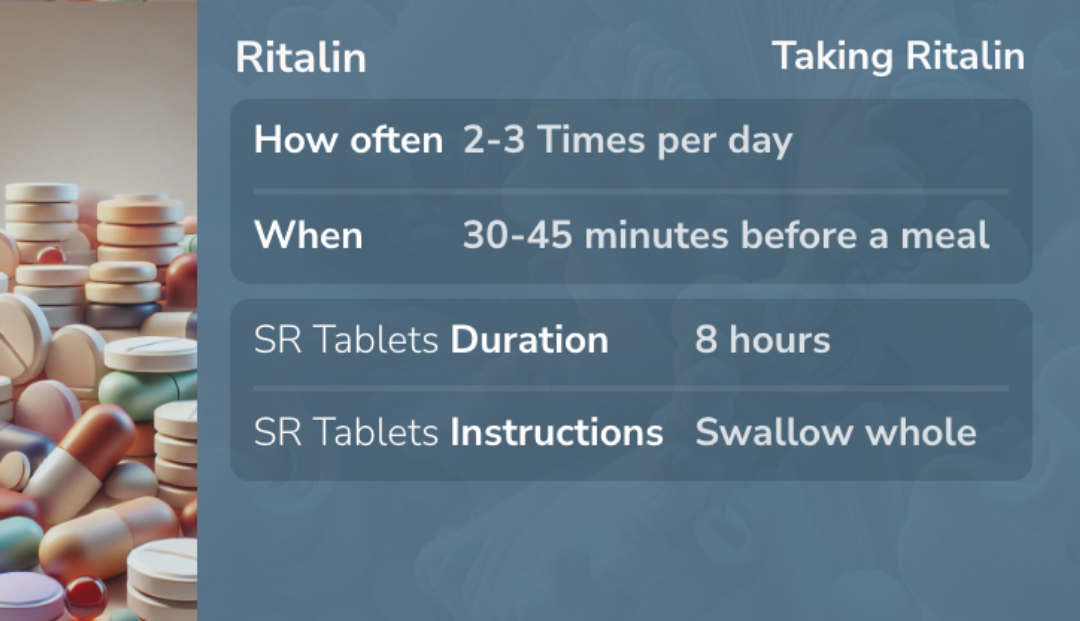
Ritalin doses need careful timing and adjustments for effective symptom management.
Ritalin Forms and Release Options
Ritalin (methylphenidate) comes in different forms to control how quickly the medication is released into the body. Immediate-release (IR) forms need to be taken more than once a day, while extended-release (ER) and sustained-release (SR) types last longer and need fewer doses.
Swallowing ER and SR tablets whole is necessary for proper drug release and to avoid issues with absorption.
Swallowing ER and SR tablets whole is necessary for proper drug release and to avoid issues with absorption.
“
Source Quotes:
Immediate-release tablets: 5 mg, 10 mg, and 20 mg.
Multiple oral formulations are available that categorize according to how quickly the drug is released: immediate (IR), extended (XR or ER), and sustained.
Adjusting Ritalin Dosages
Ritalin doses typically start low and increase slowly to find the best balance of benefits and side effects. For children over six, the usual starting dose is 5 mg taken twice daily, adjusted weekly based on response. Adults often take different doses, divided across the day.
Dose changes depend on individual needs, with some requiring higher amounts and others benefiting from lower doses.
Dose changes depend on individual needs, with some requiring higher amounts and others benefiting from lower doses.
“
Source Quotes:
A typical regimen begins with 5mg twice daily, which may be gradually increased.
Children (6 years and over) Ritalin should be initiated in small doses, with gradual weekly increments.
Timing Ritalin Doses
The timing of Ritalin doses can affect how well it is absorbed and its impact. Taking it 30 to 45 minutes before eating may improve absorption, but individual responses can differ. Adjustments may help minimize side effects such as trouble sleeping.
Sustained-release forms are usually taken once daily, reducing the need for multiple doses throughout the day and making treatment more manageable.
Sustained-release forms are usually taken once daily, reducing the need for multiple doses throughout the day and making treatment more manageable.
“
Source Quotes:
Because food is assumed to interfere with the absorption of methylphenidate, current clinical practice advises giving methylphenidate 30 to 45 minutes before eating.
This formulation has been used for once-daily morning dosing in children with ADHD who would rather not take a noon dose of methylphenidate at school.
Balancing Ritalin Effectiveness
Balancing the right Ritalin dose can be challenging. Higher doses may control symptoms better but can lead to more side effects like irritability or anxiety. Lower doses may not manage symptoms well.
Adjusting doses based on individual needs helps to maximize effectiveness while reducing unwanted effects.
Adjusting doses based on individual needs helps to maximize effectiveness while reducing unwanted effects.
“
Source Quotes:
In some children a third dose may be useful, but increasing the daily dose above 2 mg/kg is not generally useful and may cause adverse effects, such as insomnia, irritability and anxiety.
There is a great deal of individual variability in response to methylphenidate, and therefore dosage must be titrated for optimal effects in each child, avoiding possible adverse effects.
Key Takeaways
Conclusions
Ritalin (methylphenidate) is available in various formulations, each tailored to different release schedules, aiding both flexible and consistent daily symptom control.
Starting with low doses, adjustments are made to manage side effects while ensuring efficacy, with the timing of doses playing a crucial role.
Balancing effectiveness with minimal side effects requires personalized dosing and response monitoring.
Starting with low doses, adjustments are made to manage side effects while ensuring efficacy, with the timing of doses playing a crucial role.
Balancing effectiveness with minimal side effects requires personalized dosing and response monitoring.
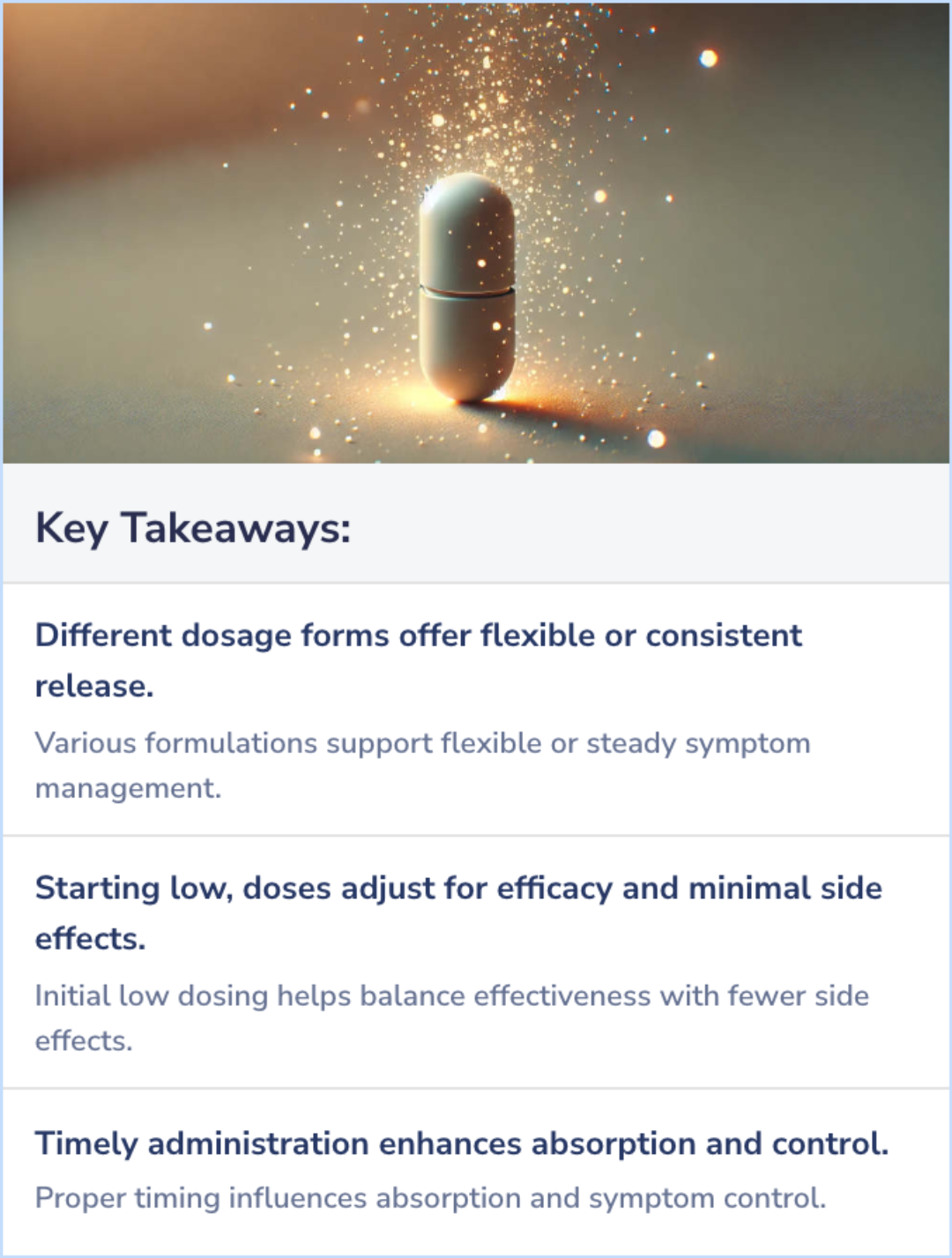
Evidence Summary
Monitoring Side Effects of Ritalin Treatment
Ritalin, a medication commonly used for ADHD, can lead to side effects such as insomnia and reduced appetite. Monitoring these effects is key for treatment.
Regular doctor visits help track its impact and adjust dosages as needed, ensuring the best balance between managing symptoms and minimizing side effects.
Regular doctor visits help track its impact and adjust dosages as needed, ensuring the best balance between managing symptoms and minimizing side effects.
Evidence Summary
Timing Ritalin’s Peak Effect for Best Results
Ritalin generally reaches its peak effect between 1 to 2 hours after taking it, though this timing can vary based on personal factors, such as metabolism.
Doctors may fine-tune doses to help individuals experience Ritalin’s effects at the most beneficial time for their needs, adjusting as necessary to find the right balance for each person.
Doctors may fine-tune doses to help individuals experience Ritalin’s effects at the most beneficial time for their needs, adjusting as necessary to find the right balance for each person.
Evidence Summary
Exploring Heart Health Risks with Methylphenidate
Recent studies are exploring the potential cardiovascular risks associated with methylphenidate, a medication commonly used to treat ADHD. Data from these studies indicate there might be a connection between methylphenidate use and increased risks to heart health.
Methylphenidate, known by brand names like Ritalin and Concerta, is undergoing closer scrutiny as researchers analyze patient data to uncover whether there’s a significant impact on heart rate, blood pressure, and other cardiovascular markers.
Ongoing investigations aim to clarify how methylphenidate affects the heart, especially considering its influence on dopamine and related neurotransmitters.
Methylphenidate, known by brand names like Ritalin and Concerta, is undergoing closer scrutiny as researchers analyze patient data to uncover whether there’s a significant impact on heart rate, blood pressure, and other cardiovascular markers.
Ongoing investigations aim to clarify how methylphenidate affects the heart, especially considering its influence on dopamine and related neurotransmitters.
